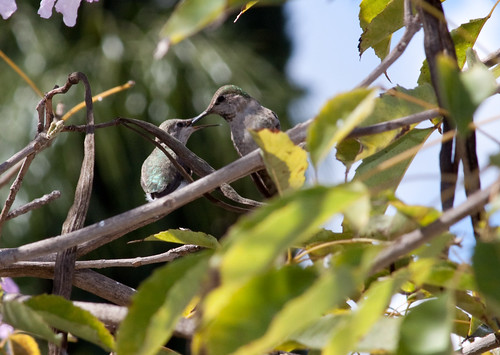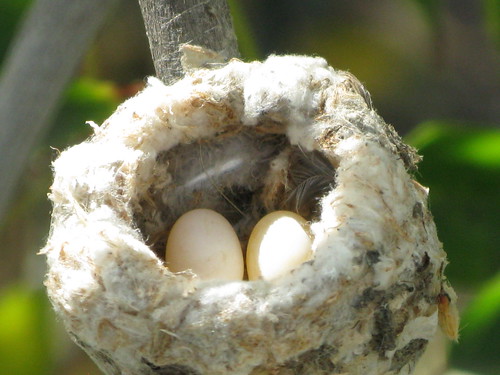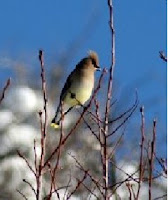
Birdlife: Spring hummingbird happenings
By Marcia Davis
Sunday, March 29, 2009
If you're an April fool for hummingbirds, it's easy to remember April 1 as a humdinger of a day - the day to hang the hummingbird feeders every year.
Ruby-throated hummingbirds keep to their schedules. Spring's first migrant hummers usually arrive in East Tennessee in early April. Be ready.
The same individual hummers that visited your yard last year may come back this year. They'll be looking for the feeder in the same place where it hung last year. Don't let them find an empty space.
Nectar-bearing flowers can be in short supply this early in spring.
Hummers need high-energy sugar-rich fuel for migration.
The formula for homemade nectar is 1 cup white cane sugar dissolved in 4 cups of water. Boil gently two or three minutes to retard spoilage and to fully dissolve sugar. Store in refrigerator up to a week. Don't use honey or artificial sweeteners. It is not necessary to use red food coloring.
After the feeders are up a few days, most of you will probably start wondering why you haven't seen any hummingbirds yet. Check the hummingbird migration map at www.hummingbirds.net to see just how far along the ruby-throats are on their journey to nesting sites as far north as Canada.
Ruby-throat enthusiasts across eastern North America report their earliest hummer sightings. Different-colored dots on this year's 2009 migration map show early arrival dates so far. Look at prior years' maps for the complete picture. Over 5,000 people reported their first hummer sightings in 2008. Report yours in 2009. This year ruby-throats were sighted in Middle and West Tennessee by March 20. They usually arrive later in East Tennessee.
Between now and late April - when courtship and nesting activities begin - plant some flowering perennial hummingbird plants. Select some plants that bloom in April, when large numbers of hummers pass through on migration every year. Next April your yard will be even more attractive to migrating hummers.
April-blooming, nectar-rich hummer plants include wildflowers like wild columbine (with drooping pendants of orange-red and yellow tubular flowers) and blue woodland phlox. Dwarf red buckeye is a small native tree with red tubular flowers. Early-blooming crossvines, coral honeysuckle and yellow Carolina jessamine are April-blooming vines.
Flowering quince shrubs with red flowers start blooming in late March.
Piedmont and flame azaleas are native shrubs that attract hummers.
Offer water in a way that helps migrating hummers take a bath. Hummers wet and preen their feathers to keep them in top shape for flying. They don't bathe by splashing around in bird baths. They shower.
Hummingbirds prefer to hover as they shower in a fine mist. Special leaf-misters for hummingbirds and other small birds connect to outdoor faucets. About 50 feet of small plastic tubing connects to a low-flow nozzle that creates a mist. Attach the nozzle to a tree branch to provide mist for hummers and to wet leaves for small birds that bathe in water held on leaves. Hummers will fly through the mist. You can also use a garden hose with the nozzle set to make a fine mist. Attach the nozzle to a tree limb or a stake in the ground.
Many people position a mister or garden hose nozzle to wet foliage above a ground-level bird bath. The sound of water dripping into the bird bath attracts more birds.
If you find baby wildlife, go to www.vbspcawildlife.com.Click on "The first thing to do...if you've found a baby bird" or "if you've found a baby mammal or duckling."
Make your reservation today call 877-766-4273 877 SONG_BRD
www.songbirdprairie.com









